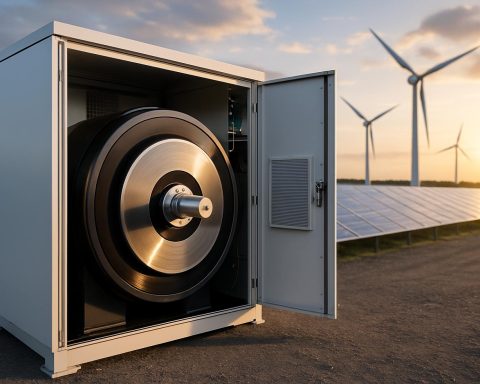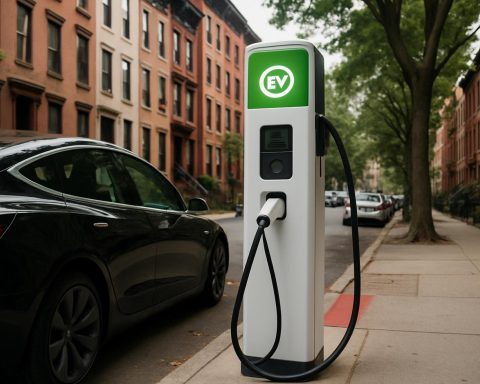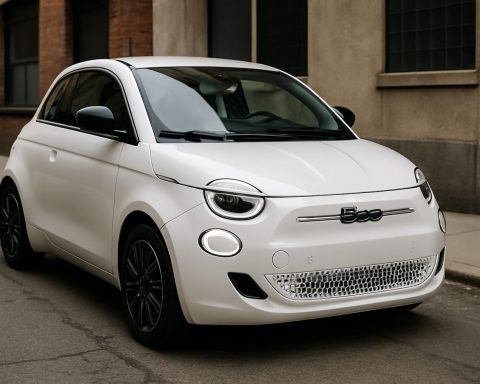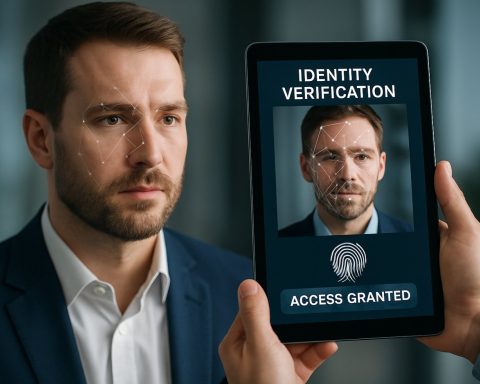- Maharashtra will enforce a comprehensive electric vehicle (EV) policy starting April 2025, targeting 30% EV adoption by 2030.
- Infrastructure upgrades include EV charging stations every 25 km, mandatory charging points in new buildings, and commercial complexes with 50% EV parking spaces.
- EV owners will benefit from full exemptions on motor vehicle taxes, registration fees, and tolls on major expressways.
- The state offers substantial incentives for fleet operators: up to ₹2 lakh for electric cars and up to ₹20 lakh for electric buses.
- Goals include cutting 1,000 tonnes of greenhouse gases and 325 tonnes of PM 2.5 emissions within five years, addressing critical air quality issues.
- Maharashtra aims to become an EV manufacturing hub through investment, research, specialized education, and stringent safety standards.
Mumbai’s relentless traffic. Pune’s crowded expressways. Across Maharashtra, a quiet revolution has begun—one that could recast the state’s future, clean its air, and redefine how nearly 130 million people move every day.
From April 2025, Maharashtra’s government will enforce an ambitious policy: a full-throttle push toward electric vehicles (EVs), hoping that by the dawn of 2030, nearly one in three vehicles on its roads will run on silent, battery-powered engines instead of gasoline and diesel.
Consider the sheer scale of change: Highway rest stops and city streets will feature humming EV charging stations every 25 kilometers. New apartment buildings will advertise not just swimming pools or gyms, but community charging points ready for the next wave of electric commuters. Half the parking spaces in every new commercial complex will soon buzz with the whir of charging cables.
Driving an electric car or two-wheeler will become more than a statement—it will save money. Owners of EVs will see full exemptions from motor vehicle taxes and registration fees, plus a 100% toll waiver for a suite of high-traffic expressways. For business or fleet owners, the numbers are even more tempting: up to ₹2 lakh in incentives for electric sedans, and as much as ₹20 lakh for eco-friendly buses. The government aims to support 100,000 new e-scooters, 25,000 e-cars, and 1,500 e-buses.
Why now? Maharashtra’s authorities seek to slash 1,000 tonnes of greenhouse gases and 325 tonnes of dangerous PM 2.5 particulate pollution from vehicle emissions within five short years. The stakes for public health and climate mitigation are high—India’s cities regularly report some of the world’s worst air quality, contributing to thousands of premature deaths.
Yet the plan stretches far beyond switches and chargers. The state is laying the foundation to become India’s leading EV manufacturing hub through financial muscle, research grants, and skilled workforce development. Engineering colleges will soon offer specialized EV courses, from battery chemistry and system design to green hydrogen production and power electronics. Government offices will switch to electric cars, and in Maharashtra’s six largest cities, half of all new utility vehicles will be mandated to run on electrons instead of petrol.
Independent testing centers—equipped to simulate thermal battery runaways and ensure the highest safety standards—will be built, demonstrating the state’s commitment to both innovation and accountability.
Maharashtra’s EV push is a model for the world’s largest democracy: a vision that knits together public policy, science, infrastructure, and industry. It is a wager on both technological progress and collective action.
Public support and continued investment will determine whether this bold vision becomes a lasting reality. The transition will challenge inertia, require patience, and depend upon a spirit of shared responsibility. But if successful, what emerges will not just be quieter roads or cleaner air—it will be a beacon for other regions yearning for sustainable growth.
For readers tracking India’s journey toward a greener tomorrow, Maharashtra shows that ambition, when matched with action, has the power to electrify an entire state.
If you wish to follow more technological innovations and government initiatives shaping the country, visit India.gov.in.
Shocking New Rules: Maharashtra’s Electric Vehicle Revolution Could Transform Every Commute in India—Here’s What You Need to Know!
Maharashtra’s EV Revolution: Game-Changer for 130 Million People
Maharashtra is charging ahead with what might be India’s most ambitious electric mobility policy to date. From sweeping incentives to rigorous manufacturing upgrades, here are game-changing facts, expert insights, and critical answers for anyone tracking India’s clean transport future—and what you should do right now to stay ahead of the curve.
—
Key Facts & Industry Insights Beyond the Headlines
1. Maharashtra’s EV Targets Are Among the Highest in India
By 2030, the state wants 30% of vehicles to be electric—far outpacing the national target of 15-20% in the same time frame. [Source: NITI Aayog]
2. Charging Infrastructure to Explode
Every 25 km along expressways: That’s over 800 charging stations planned for the Mumbai-Pune-Nashik corridors alone. Urban centers like Mumbai, Nagpur, and Pune will each see hundreds of new public, private, and semi-private DC fast chargers, supporting 2- and 4-wheelers.
3. Real-Life Impact: Cost Savings Are Substantial
Running an electric car in Maharashtra could be up to 60-70% cheaper per kilometer than petrol/diesel—with fuel prices rising, this gap will only widen. Add in tax/toll exemptions, and EV owners could save thousands each year. [Source: International Energy Agency]
4. Industrial Upside—A New EV Manufacturing Hub
Global auto giants (like Tata Motors, Mahindra, and new Chinese entrants) are betting billions on Maharashtra. The state is offering up to 10 years of tax breaks to companies setting up EV plants, batteries, and parts manufacturing.
5. Workforce & Education Growth
Maharashtra’s new curriculum will turn out 20,000+ EV engineers annually by 2027, in partnership with leading institutes and global automakers.
6. Fleet & Commercial Shift: Major Disruption Ahead
Ride-hailing services (Uber, Ola), logistics fleets, and government departments will all be compelled to go electric—creating a massive, guaranteed market for EV makers.
—
Most Pressing Reader Questions—Answered
Q1: Do EVs Really Work in Indian Conditions (Monsoons, Heat, Traffic)?
A: Yes—with caveats. Top models now offer water-resistant battery packs and thermal management systems. Government-certified vehicles must pass rigorous safety and range tests. However, battery degradation in extreme heat/humidity remains a concern for some imported models. [Reference: IS 17855 Indian Battery Safety Standard]
Q2: What About Range Anxiety?
A: New-gen models offer 200-500km per charge; city commutes average just 25-40km daily. Fast-charging (45 minutes or less) will be widely available; slow overnight charging is supported in homes/apartments.
Q3: How Do Incentives Compare to Other States?
A: Maharashtra’s incentives—₹2 lakh for cars, ₹20 lakh for buses—are among India’s highest (on par with Delhi’s). Combined with 100% waiver of road tax and registration, total savings could exceed ₹3-4 lakh on a midrange sedan.
Q4: What Does This Mean for Air Quality?
A: The plan could eliminate up to 325 tonnes of PM2.5 and slash 1,000+ tonnes of GHG emissions every year, improving public health for vulnerable groups in megacities.
—
Market Forecast & Industry Trends
– India’s EV market is projected to grow at a 49% compound annual rate through 2030, reaching $206 billion in size. Maharashtra will lead due to its policy head start and infrastructure momentum.
– Battery prices are expected to fall by 20-25% over the next five years, thanks to domestic cell production and tech R&D.
– Shared mobility, last-mile logistics, and intra-city buses represent the most lucrative use cases for early EV adoption.
Sources: Grant Thornton India, EVreporter, World Economic Forum
—
Pros & Cons Overview
PROS:
– Massive cost savings over the lifetime of the vehicle
– Reduced urban noise and air pollution
– Attractive government incentives
– Increased job opportunities in technical fields
– Lower maintenance costs for EVs
CONS:
– Limited current range for lower-end vehicles
– Battery recycling and disposal challenges
– Need for reliable grid power, especially in smaller cities
– Higher upfront price for most models (offset by incentives)
—
Security & Sustainability
EVs are subject to international safety norms (such as AIS-038), and Maharashtra is investing in local testing labs for fire, crash, and electrical safety.
Battery recycling is being addressed via Extended Producer Responsibility (EPR)—manufacturers must safely collect and recycle end-of-life batteries, limiting environmental impact.
—
Tutorials & Compatibility: How-To Guide
How to Switch to an EV in Maharashtra:
1. Check Incentive Updates: Use the official Maharashtra EV portal or India.gov.in for the latest schemes and eligible vehicles.
2. Install a Home Charger: Partner with DISCOMs or certified private vendors for subsidized home charging installation.
3. Apply for Subsidies: Submit proof of purchase and registration within 30 days to get cashbacks directly to your bank account.
4. Plan for Charging: Use dedicated apps (Tata Power, PlugShare) to find fast-charging stations on your routes.
5. Register and Get Exemptions: Ensure your vehicle paperwork includes EV status for toll, tax, and registration waivers.
—
Reviews & Comparisons: Maharashtrian EV Models to Watch
– Tata Nexon EV, MG ZS EV, and Mahindra e-Verito lead the affordable car segment.
– Ather 450X, TVS iQube, and Ola S1 Pro rule the e-scooter space.
– Modern e-buses from Ashok Leyland and BYD are already serving Pune and Mumbai routes.
—
Controversies & Limitations
– Power Shortages: Critics warn that Maharashtra’s grid infrastructure needs urgent upgrades to avoid charging bottlenecks and local blackouts during peak loads.
– Foreign Dependence: Most battery cells are still imported; domestic battery manufacturing is in early stages, raising cost/availability concerns.
– Urban-Rural Divide: Most benefits are concentrated in big cities, while rural districts currently lack adequate charging infrastructure.
—
Actionable Quick Tips
– Beat the Rush: Early EV buyers will gain the most from incentives—don’t wait for 2026 when demand (and waiting lists) may spike.
– Work Hack: Businesses can accelerate ROI by switching small fleets to e-scooters or e-cars AND apply for top-up state and central government incentives.
– Stay Informed: Bookmark India.gov.in for live policy updates and ensure you download reputable charging network apps before you buy.
– Community Charging: If you live in a society/apartment, insist on the builder providing EV-ready parking (soon to be a legal requirement for new properties).
—
Final Word: Maharashtra as India’s EV Trendsetter
If you live, work, or do business in Maharashtra, the next two years will offer the best opportunities to join the electric transport wave—saving money, protecting your health, and future-proofing your commute for a greener India. The state’s EV policy could redefine urban mobility not just for India, but for emerging markets worldwide. Stay alert, make the switch early, and be part of the revolution!
For more updates on EV innovation and government initiatives, visit India.gov.in.














